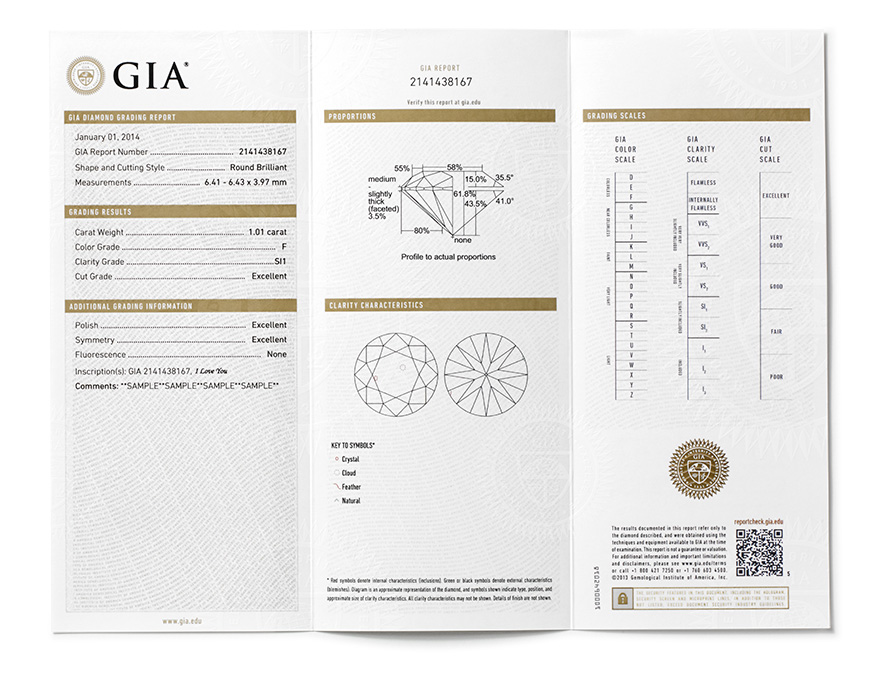Gem quality diamonds are a beautiful thing. They have been collected and coveted for centuries and are chosen to adorn everything from the common engagement ring to the crown jewels of history. Their brilliance and hardness have cemented the diamond as one of, if not the most desirable gems in the world. Prior to 1940 though, there were no standard terms or factors used to grade a diamond. They were bought and sold using subjective and vague terms that were more designed to sell the stone than to represent that specific stone's qualities.
Robert Shipley, a prominent jeweler, recognized that a change in the industry was well over-due. Shipley decided to leave retail and dedicate himself to revolutionizing our understanding of gemstones. Soon after, he introduced the 4 C's (which you can read more on here) and in 1931 founded the Gemological Institute of America, or the GIA. Since then, the jewelry industry has fully embraced the 4 C's as the international standard to define a diamond's quality.
GIA vs Other Grading Houses
After the 4 C's and their corresponding grades were introduced and integrated into the industry, the diamond business experienced a boom due to increased consumer confidence. These clearly defined grades allowed the customer and retailer to discuss diamonds on a common ground for the first time. In 1953, the GIA produced the first diamond grading report or diamond certificate, a document detailing the qualities of a specific stone.
Not long after, several other diamond laboratories began to appear, such as IGI, AGS, and EGL, just to name a few. They began offering similar diamond grading services. But even with these other grading houses and laboratories, the GIA still retains the reputation as the ultimate authority on a diamond's quality. Their reports are famously accurate, consistent, and produced without bias. Unfortunately, several of these lesser known grading houses have established a negative reputation in the jewelry and diamond industry for having inflated and untrustworthy diamond certificates.

Example of a Diamond Report (Courtesy of GIA)
For example, let's assume that you are looking to buy a diamond. Suppose a diamond is graded by the EGL and, based on that grading, would normally retail for $8,000. If you buy it for $7,000, you probably think you got a great deal. However, the GIA might certify that same diamond at a lower grade that normally would retail for just $6,000. Suddenly, not only did you end up with a lesser quality diamond, you just overpaid by $1,000 for it!
Our Commitment
We are committed to offering diamonds that have been graded according to the strictest and most-respected industry standards, so you can be confident in your diamond and its certified quality. That is why the only independent laboratory we use to certify our diamonds is the GIA.
We also have a robust selection of diamonds which we have graded in-house. While these diamonds have not been certified by the GIA, we stand behind our assessment and guarantee our diamonds are accurately graded. Our trained and experienced staff at our downtown Brighton location is available during our regular business hours to assist you in your diamond selection or you can schedule an individual appointment with our diamond expert at (810) 225-1414.

